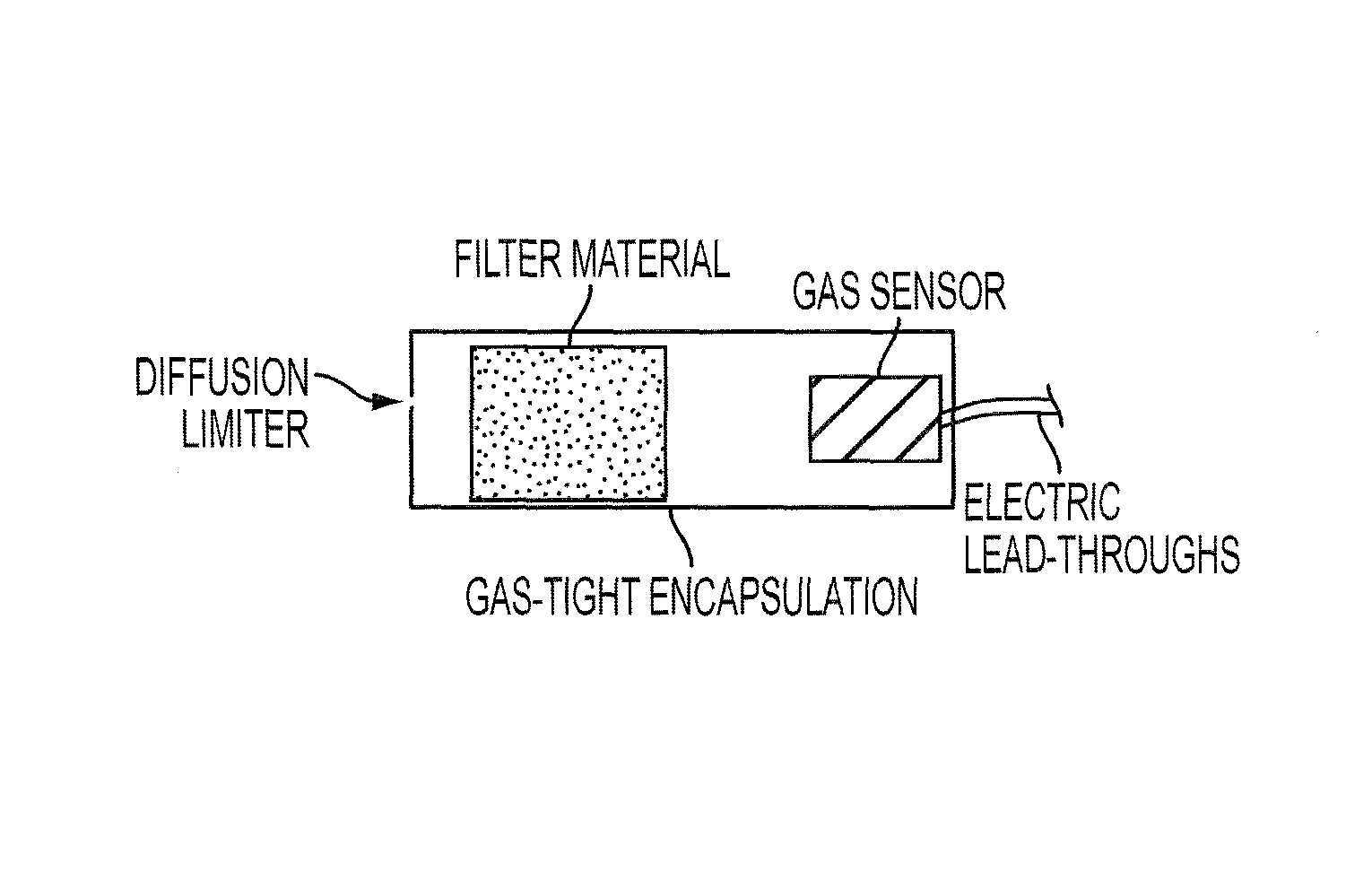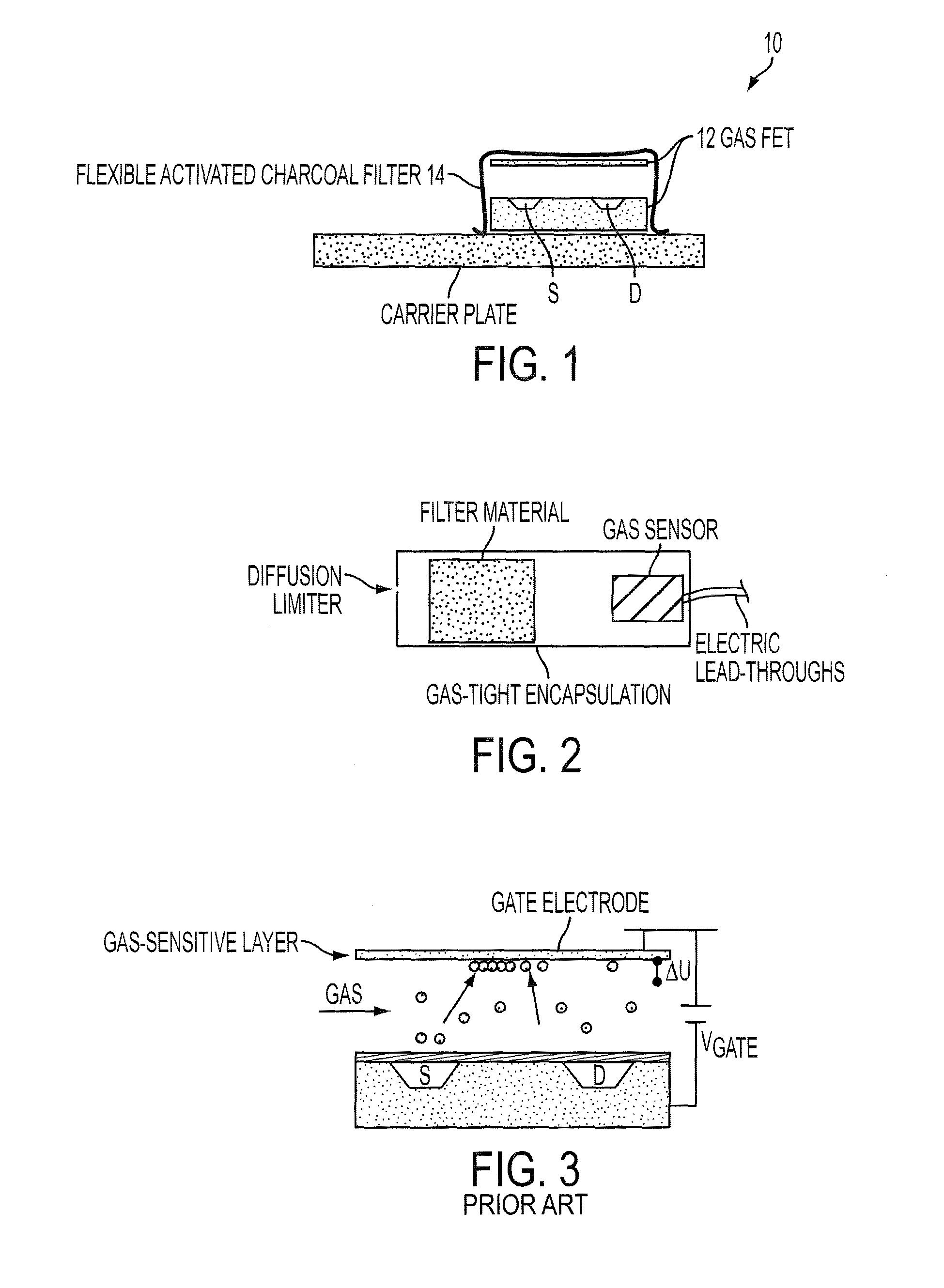Apparatus and method for increasing the selectivity of FET-based gas sensors
a technology of gas sensors and apparatus, applied in the field of gas sensors, can solve the problems of affecting the usability of applications, affecting the service life of filters, and affecting the detection accuracy of gas sensors, so as to reduce the diffusion rate of analyte gas, reduce the service life of filters, and reduce the effect of operating temperatur
- Summary
- Abstract
- Description
- Claims
- Application Information
AI Technical Summary
Benefits of technology
Problems solved by technology
Method used
Image
Examples
first embodiment
[0025]A first embodiment uses the property of GasFETs that their operating temperatures are drastically lower than those of heated metal oxide sensors, and typically lie between room temperature and about 100° C. In this embodiment, a filter 14 is mounted at only a slight physical distance from the actual sensor element. FIG. 1 illustrates a typical structure. Inasmuch as the operating temperature of the GasFET is about 100° C. at most, as mentioned above, the filter 14 can assume the operating temperature of the GasFET without an unacceptable decrease in its adsorbent activity.
[0026]A suitable filter material is carbon fiber fabric, for example that sold by Charcoal Cloth under the trade name Zorflex™. The fabric is made from pure viscose cellulose that is completely carbonized under appropriate reaction conditions. Because of its structure, the material is distinguished by a large active surface area, with the active surface being produced essentially by the micropores within the ...
second embodiment
[0029]A second embodiment is based both on structural details of the FET gas sensors and on their property of needing only a very small amount of analyte gas for detection, in contrast to the highly gas-consuming metal oxide sensors. To lengthen the service life of the filter elements and to prevent deactivation from saturation, gas access to the filter element is sharply limited. This greatly delays filter saturation. However, the small amount of available gas is sufficient for gas detection with the FET sensor. FIG. 2 illustrates a schematic description.
[0030]Gas diffusion can be limited both by a small orifice as a diffusion limiter 16 and by a diffusion-limiting membrane that also protects the system well against dust. An advantageous embodiment of this principle is illustrated in FIG. 5. Illustrated here is the region of the gas diffusion gap 16 in a hybrid flip-chip structure for a gas sensor. A depression is made in the carrier material of the gas-sensitive gate, in which the...
PUM
| Property | Measurement | Unit |
|---|---|---|
| temperature | aaaaa | aaaaa |
| temperature | aaaaa | aaaaa |
| operating temperature | aaaaa | aaaaa |
Abstract
Description
Claims
Application Information
 Login to View More
Login to View More - R&D
- Intellectual Property
- Life Sciences
- Materials
- Tech Scout
- Unparalleled Data Quality
- Higher Quality Content
- 60% Fewer Hallucinations
Browse by: Latest US Patents, China's latest patents, Technical Efficacy Thesaurus, Application Domain, Technology Topic, Popular Technical Reports.
© 2025 PatSnap. All rights reserved.Legal|Privacy policy|Modern Slavery Act Transparency Statement|Sitemap|About US| Contact US: help@patsnap.com



